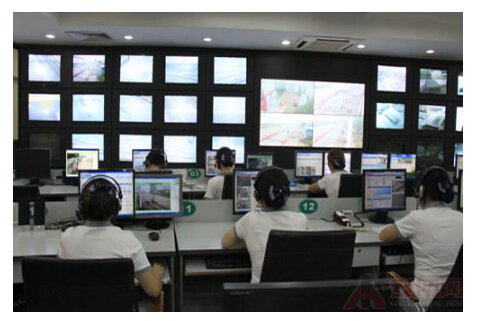· Improper setting of the camera or aging of the device, including the resolution of the camera, the sensitivity of the camera to illumination, lens focus adjustment, color correction, etc.

· A large number of PTZ domes are used. Long-term motion zoom may cause some ball machines to have wrong direction and uncontrollable faults.
For the various video faults mentioned above, the fault types can be classified into eight types: missing video signal, abnormal video resolution, abnormal video brightness, video noise, video snowflake, video color cast, picture freeze, and PTZ motion loss control. Among them, the video signal missing and the picture freeze can be concluded by manual design based on the video image comparison method; the PTZ motion out of control is issued by the fault detection system, and then detected by motion analysis of the video image. Whether there is a fault; for the other five faults, it is difficult to detect by manually setting rules. This requires a machine learning method to let the machine simulate the human visual response and detect whether the video is faulty.
Five different machine learning-based detectors are designed for these five different types of video failures, each detector is responsible for analyzing whether a video has a fault and the severity of the fault.
In the actual running video surveillance system, a large number of video clips are extracted, including normal video and video with various faults, forming training samples, simulating human visual characteristics, and extracting a large number of video image feature parameters for different fault types. Trained to get a detector that diagnoses different faults. In the analysis phase, a fixed length video to be analyzed is obtained, and according to the detection item of the video set by the user, different fault detectors are used to extract corresponding video image features, and then input to the trained fault detection model. In the middle, you can get the fault evaluation result of the video.
Based on the excellent underlying algorithm, the video quality diagnosis system has the following technical features:
High accuracy: a large number of video of actual video surveillance systems are used as training samples. Various fault detectors are derived from actual systems and have been tested by a large number of actual systems, so the detection accuracy is high;
Good camera angle adaptability: The fault detector's training samples come from a variety of different scenes, covering many common camera monitoring angles in public security video surveillance systems, so they are good for various camera angles, focal lengths, and different camera content. Adaptability
· Unique ability to resist the movement of the ball machine: In the design and training process of each type of fault detector, the changes of the video image features that may be brought about by the camera pan/tilt movement and the zooming of the lens are taken into account. In the detection process, the camera motion analysis is first performed. Once the camera is found to be in the PTZ motion process, the PTZ motion is not detected abnormally first, so as to prevent the motion command from being sent during the detection to affect the current dome motion; secondly, only the camera is used. Motion-insensitive features for other types of failure analysis to avoid false positives or false negatives due to motion;
· Excellent environmental adaptability: The algorithm module is not sensitive to changes in light and shadow caused by traffic flow, people flow, season, climate, etc. Therefore, it can be applied to many different outdoor environments;
· Reinforce learning ability: There is still a significant gap between the existing video quality diagnosis system and human fault recognition ability, so the difference of application scenarios has an impact on the performance of the video quality diagnosis system. Like the human visual system, the video quality diagnostic analysis module also has the ability to enhance learning after learning. As long as the new sample is added to retrain the detector, the performance of the algorithm will be further improved.
Xinteli wires are made from carbon steel materials, aluminum, brass, stainless steel.The major process for wire treatment is drawing, galvanizing, annealing, straightening and cutting, redrawing, zinc plating and plastic coating. Xinteli supplies wires in coils, bundles, spools. Finishes can be electro galvanizing, hot dipped zinc coating, copper coating, nylon coating, stainless steel or plain. Xinteli wire both has big package for industrial netting, fencing, and small coil for binding, garden tying and daily uses.
*Related Products:Pvc Coated Wire,Barbed Wire,Razor Wire,Anneal Wire.


Iron Wires
Iron Wires,Iron Wires Mesh,Galvanized Iron Wire,Pvc Coated Wire,Barbed Wire,Razor Wire,Anneal Wire
Hebei Xinteli Co., Ltd. , http://www.sinohardwares.com